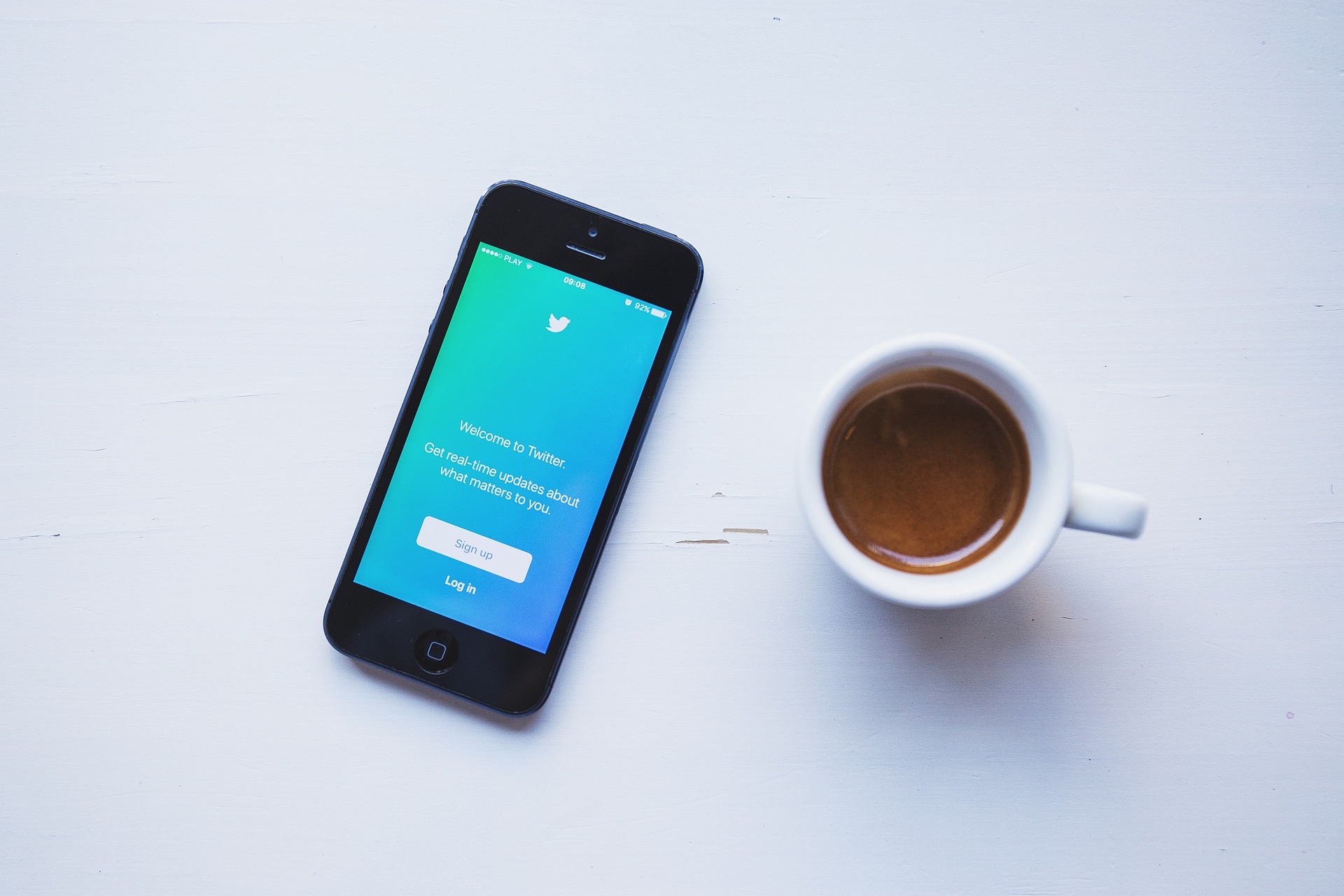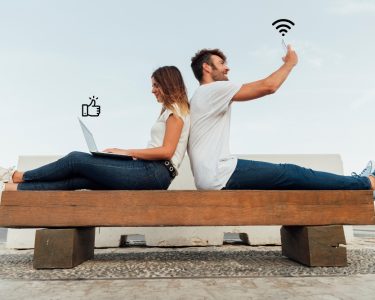System Under Fire as #BlockTheBlue Trend Gains Momentum
The power of social media has never been more apparent, with hashtags and trends shaping the conversations we have online. One such trend gaining momentum is #BlockTheBlue, which aims to combat the negative effects of blue light emitted by screens. From filters to glasses, users are taking a stance against the potential harm caused by digital devices. But is this movement all it’s cracked up to be? In this blog post, we’ll take a closer look at #BlockTheBlue and explore its pros and cons, as well as alternatives for those considering joining the trend. So sit back, relax (but not too close to your screen!), and let’s dive in!
What is #BlockTheBlue?
#BlockTheBlue is a movement that aims to reduce the amount of blue light emitted by screens, which can cause eye strain and disrupt sleep patterns. Blue light is part of the visible spectrum and has a short wavelength, making it more likely to scatter within the eye. This scattering can lead to visual discomfort, headaches, and fatigue.
There are several ways users can participate in #BlockTheBlue. One popular method is using software filters that adjust the color temperature of their screen. These filters add a yellow or orange tint that reduces blue light emissions without affecting overall image quality.
Another option is to wear glasses with specialized lenses designed to block blue light. These glasses have become increasingly popular among gamers who spend extended periods staring at screens.
While #BlockTheBlue may seem like a simple solution, it’s important to note that not all blue light exposure is harmful. Some studies suggest moderate exposure during daylight hours may even be beneficial for regulating circadian rhythms.
While reducing excessive blue light emission from screens might be helpful for some individuals experiencing symptoms related to digital device usage – everyone should approach this trend cautiously and consider consulting an expert if they’re concerned about their eyesight or general health as it could affect people differently based on their needs and circumstances!
The Different Types of #BlockTheBlue Movements
The #BlockTheBlue trend has gained momentum in recent times, leading to the development of various movements aimed at reducing the harmful effects of blue light. Some of these movements include:
1. Blue-Light Blocking Glasses: One popular movement is the use of blue-light blocking glasses, which are designed to filter out blue light wavelengths that can cause eye strain and disrupt sleep patterns.
2. Night Mode: Another common movement is the use of night mode on electronic devices such as smartphones and laptops. This feature reduces blue light emissions by shifting the color temperature towards warmer tones.
3. Screen Filters: Screen filters are another type of movement gaining traction among those looking to reduce their exposure to blue light emissions from electronic devices.
4. Light Bulbs: Health-conscious individuals have also started using amber or red-colored light bulbs instead of traditional white ones, which emit less blue light wavelength.
While each movement aims to mitigate some adverse effects associated with prolonged exposure to artificial sources of blue light, it’s important always to weigh their pros and cons before embracing them fully.
Pros and Cons of #BlockTheBlue
#BlockTheBlue has gained momentum as a social media trend that aims to protect users from harmful content and aggressive behavior on Twitter. However, like all movements, it has its own set of pros and cons.
One significant advantage of #BlockTheBlue is that it allows users to take control over their online experience by blocking unwanted content. With this trend, they can avoid getting exposed to offensive or triggering material without having to interact with it directly.
On the other hand, some argue that blocking out opposing views may limit the opportunity for healthy discourse and debate. It’s essential always to be open-minded when engaging in any conversation and not let personal biases hinder intellectual growth.
Another downside is that #BlockTheBlue may lead to echo chambers where individuals surround themselves with like-minded people only. This isolation leads people away from learning about diverse opinions or new perspectives which are essential for personal development.
Whether you decide on joining #BlockTheBlue or not depends entirely on your preferences regarding social media usage. But regardless of your stance towards it, we should always strive towards creating respectful dialogue while maintaining our boundaries against toxic engagement.
What to do if you’re thinking about joining the trend
If you’re thinking about joining the #BlockTheBlue trend, it’s important to consider your reasons for doing so. Are you concerned about the impact of blue light on your health and sleep? Or are you simply following the crowd without fully understanding the issue?
Before making any changes to your device settings or purchasing blue-light blocking products, do some research and become informed about the topic. Read up on studies that have been conducted on blue light, as well as reviews of different products.
Consider consulting with an eye doctor or sleep specialist to get their professional opinion on whether #BlockTheBlue is right for you. They can also recommend specific products or settings based on your individual needs.
If you do decide to join the trend, start by adjusting your device settings, such as enabling night mode or reducing screen brightness. You can also try using a blue-light blocking app or wearing blue-light blocking glasses while using devices in the evening.
Remember that there are alternative solutions available if #BlockTheBlue doesn’t work for you. For example, limiting screen time before bed and establishing a relaxing bedtime routine can help improve sleep quality regardless of exposure to blue light.
Make sure that any decisions regarding #BlockTheBlue are made with careful consideration and awareness of all options available.
Alternatives to #BlockTheBlue
While the #BlockTheBlue movement has gained a lot of momentum on social media, some people may not want to participate for various reasons. Fortunately, there are alternatives available if you still want to protect your eyes from harmful blue light.
One option is to use blue light blocking glasses or screen filters that attach directly onto your device’s screen. These can be purchased online or in electronic stores and provide a physical barrier between your eyes and the blue light emitted by screens.
Another alternative is to adjust the settings on your devices manually. Most smartphones, tablets, and computers have built-in options that reduce the amount of blue light emitted by adjusting color temperature settings.
You could take regular breaks from using digital devices altogether. This gives your eyes time to rest and recover from prolonged exposure to screens.
Remember that while it’s important to protect our eyes from harmful blue light, there are multiple ways we can achieve this goal without necessarily participating in trending movements like #BlockTheBlue.
Conclusion
The #BlockTheBlue trend has gained an incredible amount of momentum on social media, with people wanting to cut down the blue light emitted by digital devices. While it has its benefits, including improved sleep and reduced eye strain, there are also certain drawbacks.
Before jumping onto the bandwagon, it’s important to weigh the pros and cons and decide what works best for you. If you do choose to #BlockTheBlue, ensure that you’re using verified products that have been tested thoroughly.
It’s also worth exploring other alternatives such as reducing screen time or adjusting your device settings instead of blocking the blue entirely. Regardless of your choice, make sure that you’re making informed decisions about your health in this digital age.
While the #BlockTheBlue trend may seem like a quick fix solution to our digital woes, it’s not necessarily a one-size-fits-all approach. It’s essential always to prioritize our well-being over fleeting trends and take proactive steps towards optimal health in today’s tech-driven world.




